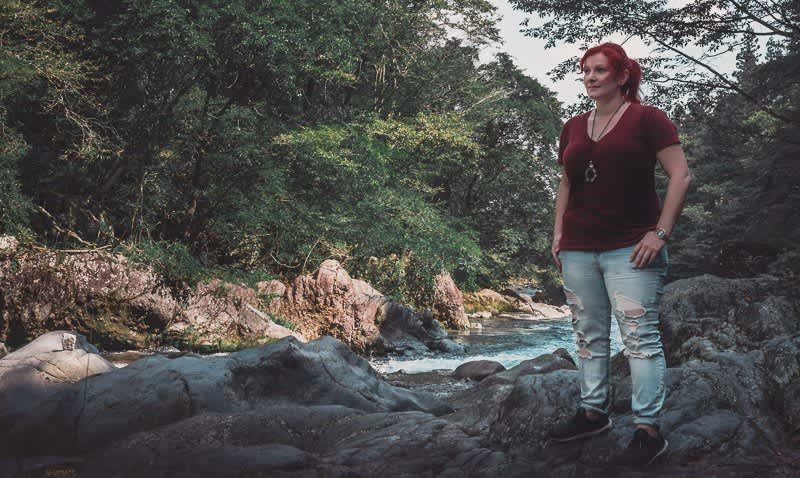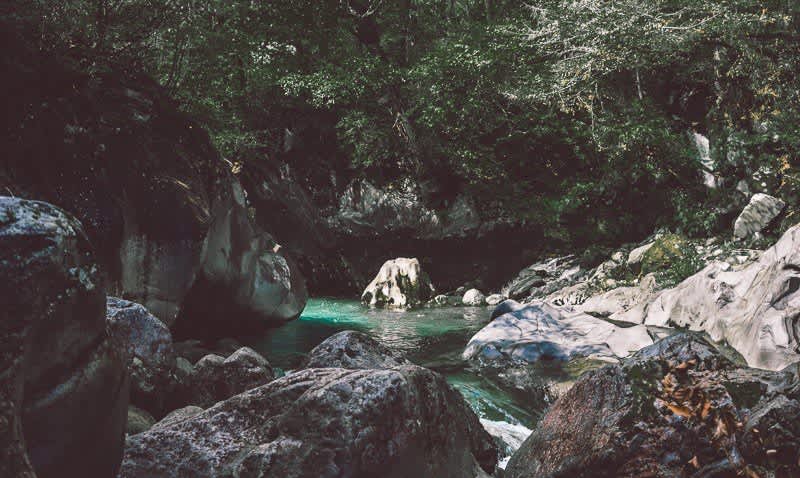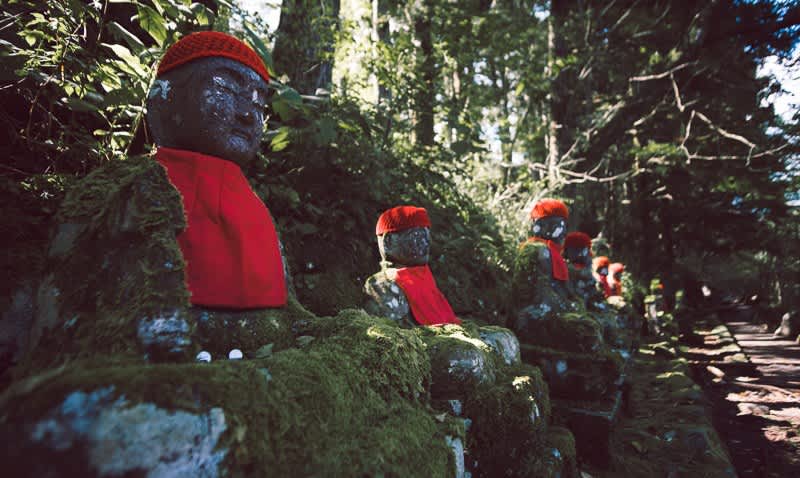
We’ve all been there. Caught in a horde of eager tourists – and yes that has been you at some point – dozens of cameras and iPads blocking the artwork/landmark/thing you’ve come to see. The slightly claustrophobic feeling of ‘personal space’ being a mere memory. The sheer terror of middle aged men in socks and sandals with bum bags on their waists- ah, wait that last one’s probably just me…
In short, have you ever felt like immense crowds spoilt an experience for you?
THIS POST IS THE FIRST IN MY SERIES JAPAN OFF THE BEATEN PATH.
It’s no secret the country has a huge population, but did you know they received nearly 20 million visitors over 2017, and 2.5 million this January alone? It’s crazy! As you might imagine, finding uncrowded hidden gems close to Japan’s most popular cities and towns is difficult.
But it’s not impossible.
Enter Kanmangafuchi Abyss, Nikko’s hidden gem, and a perfect way to experience Japan off the beaten path.

Kanmangafuchi Abyss is a gorge in the beautiful mountain city of Nikko, around 1.5 hours north of Tokyo by train. Nikko makes a great day trip and is home to a massive collection of UNESCO world heritage shrines & temples, a stunning national park, and many onsen resorts; it’s also a stunning place to see the Autumn foliage.
Autumn is peak season in Nikko, so it’s packed around this time, as well as Golden Week in Spring. Before leaving for Japan I saw loads of forum posts about how much people hated the crowds; it negatively affected their visit. As with all travel though, just a little effort can yield big results.
I had one and a half days to explore Nikko, the first day was spent wandering around the area near Shinkyo Bridge, and exploring Hongu Shrine and the surrounds. When it rained I took shelter in a cozy tea house, watching the rain dance off the cobblestones from a window seat. On the second day I woke up early to beat the crowds to Rinno-ji Temple; I was lucky and only saw a few other people while I was there, most of the crowds arrived as I was leaving.


This busy period is when I finally took the bus to the nearest stop to Kanmangafuchi Abyss; find details/map at the end of this post. The peaceful 15 minute walk takes you through a quaint residential area of traditional houses, over a small bridge and then along the river.

Eventually you come to a long row of stone statues called Bake Jizō, meaning Ghost Jizō. They’re named this because apparently you can never count the same number each time.
I tried counting them but a) there’s a lot of statues and b) I was distracted taking pictures of them. Come on, look at those bright red bibs and hats!

JIZŌ IS A KIND OF SAINT-LIKE FIGURE IN JAPANESE BUDDHISM, THEY HELP OTHERS REACH THE AFTERLIFE, DELAYING THEIR OWN ENLIGHTENMENT OR BUDDHAHOOD OUT OF COMPASSION FOR ALL BEINGS.
These statues face the abyss, which was formed thousands of years ago by the eruption of a nearby volcano. It’s easy to see how the lava flowed into the gorge as it opened; with wave formations in the smooth, light grey rock which blankets the area. As if Japan in general wasn’t already enough of a postcard moment, the grey contrasts beautifully against azure water and green forrest; accompanied only by the sound of babbling water and rustling trees; talk about peaceful!
While there are good views from the main path, there are some small natural trails leading down the bank, right onto the rocks by the water. I don’t know if climbing down is strictly allowed, but there are no barriers or signs saying otherwise. Just don’t be an idiot disrespectful, and be careful where you tread; I was super cautious and still slipped over. Still, totally worth falling on my arse and getting dirt on my light blue jeans.

The beauty is that you don’t have to share, much. Despite Kanmangafuchi Abyss being marked on all the guide maps, it seems not to be a huge drawcard for most tourists. I only saw one woman leaving as I arrived, and another two couples after that – for the entire time I was there.
It could be because it’s isolated from the rest of Nikko’s attractions, or perhaps the Ghost Jizō keep this place unspoilt by crowds, but whatever it is makes Kanmangafuchi Abyss a great place to explore Japan off the beaten path.
Maybe go for the black pants though.

Directions
Walk: 30-40 mins from Shinkyo Bridge to Kanmangafuchi Abyss
Bus: Stop 8 (World Heritage Bus), Stop 9, or Stop 86. Then a 15 minute walk to Kanmangafuchi Abyss.

Reposted with the permission of Amelia Heldt of The Beat of Adventure, a travel blog started by a graphic designer, featuring creative travel lifestyle content aimed at makers and creators who are inspired by adventure.
About Travellers Blog
Travellers Blog entries are submitted by travellers communicating their travel experiences in Japan and are published ‘as is’. Opinions written do not necessarily reflect those of JNTO. If you wish to submit a blog, please submit an enquiry through the contact us page.



















































